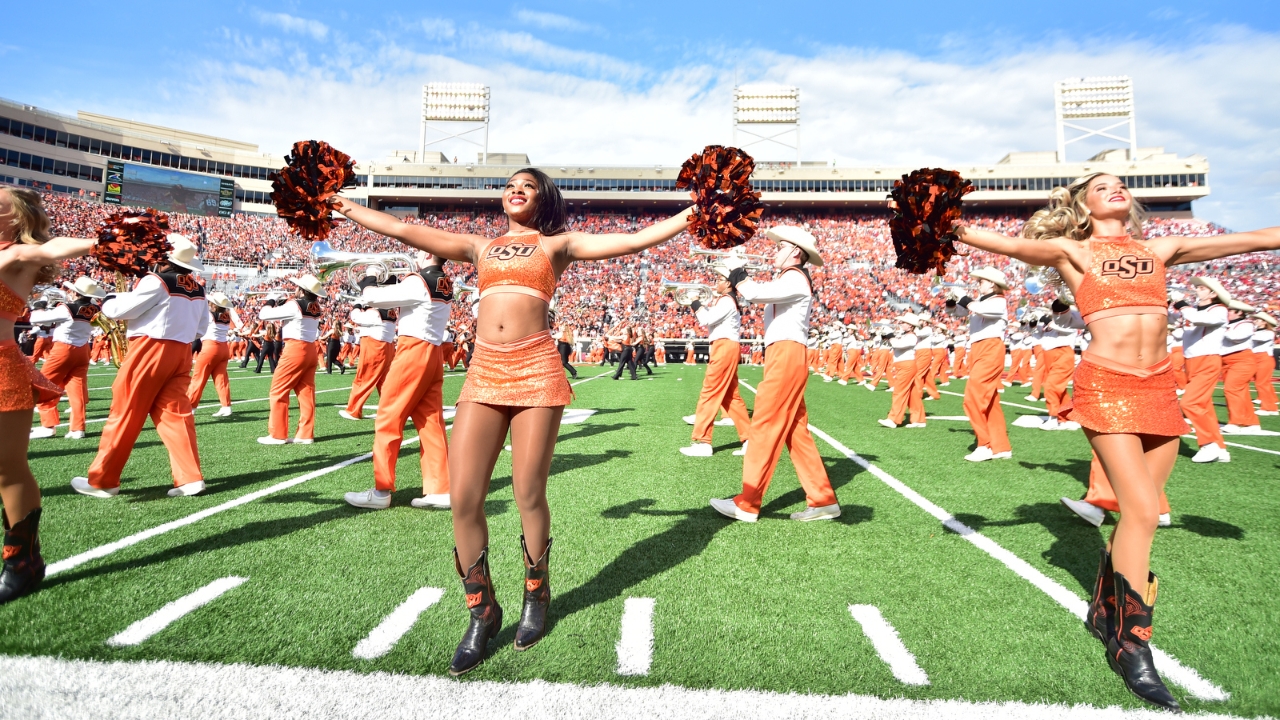
A Well Done Synopsis of What House vs. NCAA Settlement Means
STILLWATER – We all know that the NCAA Board of Governors and the Power Five Conferences (ACC, Big Ten, Big 12, Pac-12, and Southeastern Conference) all voted to settle the case of House vs. NCAA. This settlement should also go toward a resolution in two other class-action cases that are in the same court. The basic is that the NCAA and Conferences (their members) will pay $2.8 billion in damages to the plaintiffs. The defendents will also 22 percent of the average Power Five revenues to current student-athletes. That figure is estimated in most stories and reporting to $20 million annually, but obviously can go up and go down.
Also, scholarship caps will be removed allowing athletic departments to spend more there as well. You can expect to see most all sports become full scholarship sports. Sports like baseball and wrestling at Oklahoma State that have been fractional scholarship sports will change.
A story from business information and journalistic leader, Forbes Magazine, has outlined well much of what will happen in the future as a result of this settlement. You can read the entire story here.

Steve Berman, a managing partner and co-founder at the firm Hagens Berman represented the plaintiffs in the suit and he told Forbes, “Our clients are the bedrock of the multibillion-dollar business and finally can be compensated in an equitable and just manner for their extraordinary athletic talents.”
I would agree with Mr. Berman on that better if his clients were all Power Five college football players and the name plaintiffs in the suit weren’t former Arizona State swimmer Grant House or women’s basketball player Sedona Prince. We’ll get to the best part of this settlement and that is how the new revenue sharing with student-athletes will be determined.
Damages
The plaintiffs, member of the class-action suit of which there are estimated to be 14,500 of them, all athletes in Division I from June 15, 2016 through the date the class was established, Nov. 3, 2023. That money, $2.8 billion will be split among them minus 25-35 percent going to the attorneys.
Berman told Forbes Magazine that the moeny will be split pursuant to a formula created by a sports economist, some money split equally among all, some split based on the former athlete’s market value.
How will the defendants pay the money?
There are a lot of theories floating around here. The most common have the NCAA paying approximately $1.1 billion with reserves. Then another $1.65 billion will be paid by the Power Five and the other Division I conferences paying $990 million.
Much of that will be money simply witheld by the NCAA of revenue that would have been shared from March Madness and other NCAA championship events.
How much money will current and future athletes receive?
The settlement dictates that going forward student-athletes will be paid a total annually of up to $21-22 million as revenue sharing. That number will increase over the 10-year settlement based pn 22 percent of the average Power Five school’s annual revenues.
The payment to the athletes will be up to the school, but it won’t be uniform or across the board equal. More than likely the money will be paid based on a formula to determine each athlete’s value to the department.
Where will that money come from?
This is the big question for each school. Does it come from facility upgrades being decreased, salaries decreased or athletic department employees laid off, do schools cut sports? More than likey exppect a combination of all these as athletic departments tighten their belt to add this expense, roughly a fifth of their annual revenues to their expenditures.
Will NIL collectives go away with this settlement?
In administrators’ ideal world, the House settlement will bring an end to the “wild, wild West” era that sprouted up when the NCAA was forced in 2021 to allow NIL but instituted few if any regulations around it. Fat chance.
The settlement will allow, say, Ohio State, to share up to $20 million with its athletes. Which seems like a lot. But schools won’t be able to give all $20 million of it to the football team, lest they themselves want to be sued by their women’s sports athletes.
From The Athletic website and the story: Paying college athletes will usher in a new era of uncertainty. But here’s what won’t happen, by Stewart Mandel
The understanding is that NIL collectives are about Name-Image-and-Likeness even those any intelligent person connected with college athletics knows it is 90 percent or more pay-for-play. The schools that cheat such as Miami, Fla; Tennessee; etc. will continue to cheat and keeping the collectives running allows them to do so. Collectives will stay for those that want to find a way to pay their football and maybe basketball players some more.
Does Title iX apply in the payouts?
I don’t see how it can or would. First, this is not an educational issue. It is a legal issue out of a legal action. We already stated that if you pay all the athletes the same then you risk antitrust issues all over again.